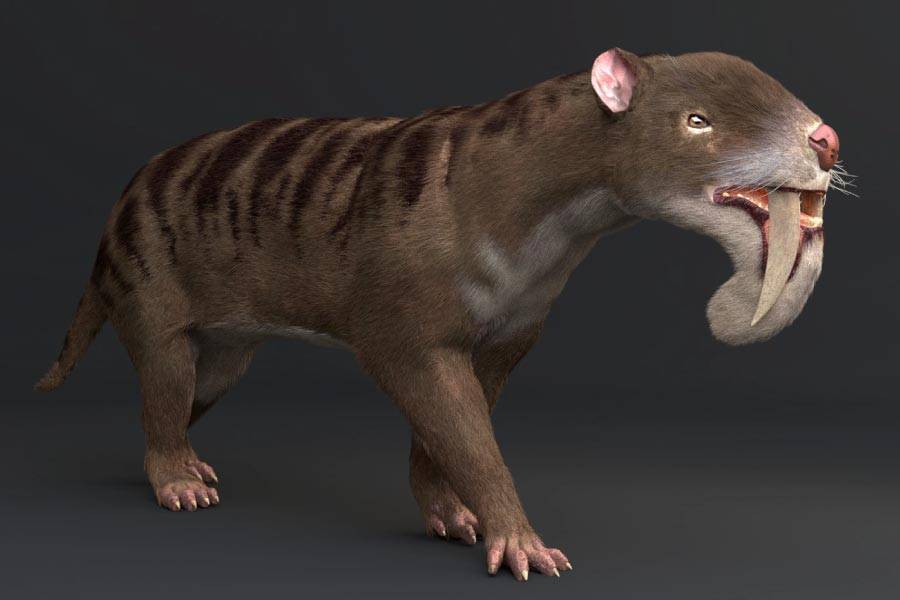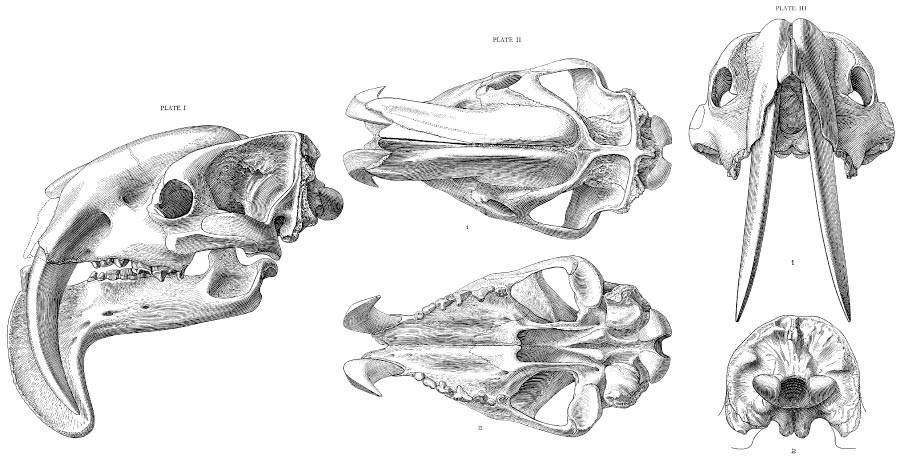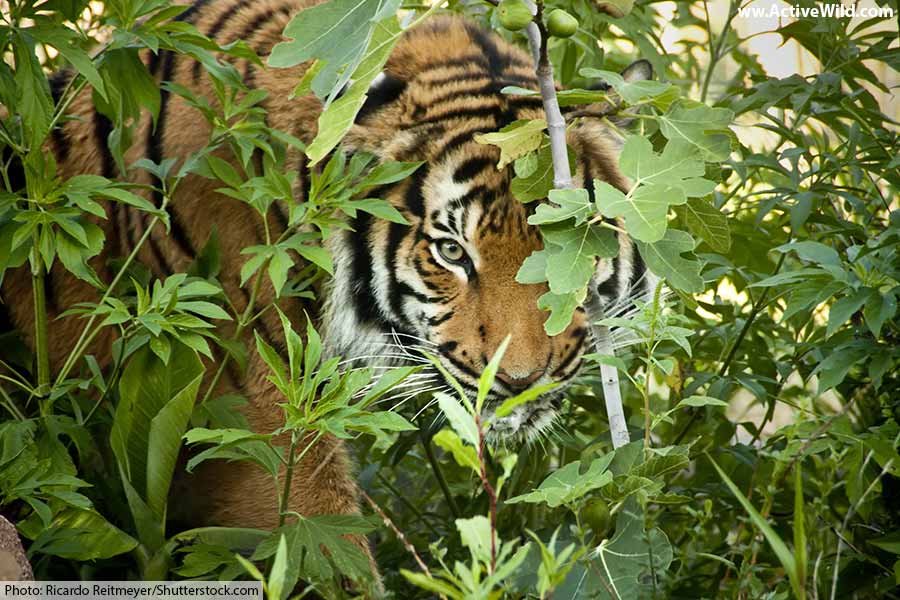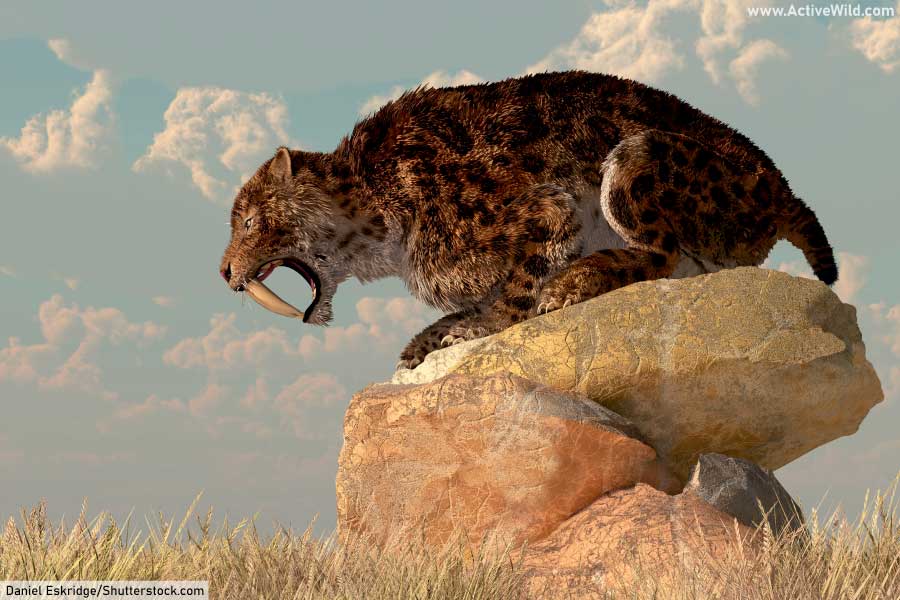
Whereas most predators have forward-facing eyes, those of the saber-toothed Thylacosmilus were positioned towards the sides, out of the way of the animal’s huge teeth.
A team of scientists recently examined how the prehistoric South American hypercarnivore was able to hunt, despite its unusual features.
Thylacosmilus

Thylacosmilus was a saber-toothed, predatory mammal that lived in South America around 9 to 3 million years ago, during the Miocene and Pliocene epochs of the Neogene Period.
With its huge canines, Thylacosmilus resembled a saber-toothed tiger, but the fearsome prehistoric animal wasn’t a cat, or even a placental mammal.
In fact, Thylacosmilus was a “Sparassodont”, a type of metatherian mammal more closely-related to living marsupials such as kangaroos than to cats.
Recent research has shed some light on the unusual skull of the Thylacosmilus, whose eyes, unlike those of most predators – including other sparassodonts – were positioned at the sides, rather than at the front, of its head.
Jaguar-Sized South American Predator
With a body length of around 1.5 m / 4.92 ft., and a maximum estimated weight of between 120 and 150 kg (264.55 and 330.69 lb.), Thylacosmilus was around the size of a jaguar, the largest living cat of the Americas.
The most distinctive feature of Thylacosmilus was its elongated upper canine teeth. These are thought to have functioned like daggers and were used for subduing and dispatching prey.

Unlike those of saber-toothed cats such as Smilodon, Thylacosmilus’s saber-teeth lacked roots, and extended backwards to the rear of the skull, growing continuously throughout the animal’s lifetime.
When Thylacosmilus closed its jaws, its blade-like teeth were protected in sheaf-like grooves in the lower jaw.
As if any further evidence of Thylacosmilus’s carnivorous diet was necessary, the species also had sharp claws and an array of other teeth suited to meat-eating.
It was likely Thylacosmilus was a hypercarnivore – an organism whose diet consists of more than 70% meat.
Surprisingly, the bite force of Thylacosmilus – like that of Smilodon – is not thought to have been particularly strong. Instead, these saber-toothed animals likely used their powerful neck muscles to drive their fearsome teeth home.
Thylacosmilus Unusual Eye Placement

It’s a well-documented phenomenon that predators tend to have forward-facing eyes, while herbivores tend to have eyes on the sides of their heads.
Having forward-facing eyes, or binocular vision, offers numerous advantages for a predator.
Chief among these is better depth-perception (the ability to tell how far away an object – such as a prey animal, is). Another benefit is an improved ability to detect prey that is partly concealed behind another object.
Having two eyes focused on the same area also allows for “binocular summation”, in which the information from both eyes is combined, providing numerous improvements in overall visual perception.
Not least, having two forward-facing eyes allows a predator to continue to function even if one eye is lost.
Herbivores, on the other hand, tend to have eyes positioned on the sides of the head. This arrangement increases the field of vision. As a result, herbivores generally have a good idea of what is happening all around them; a useful ability if you spend much of your life grazing.
Due to its highly-extended canine teeth, the eyes of Thylacosmilus were positioned to the sides of its skull. This made Thylacosmilus unusual among sparassodonts, all of whom have the typical, forward-facing eyes of a predator.
Although Thylacosmilus was clearly predatory (you don’t evolve teeth like that for eating grass), scientists were puzzled over how the animal maintained a meat-eating lifestyle with eyes seemingly unsuited to the task.
A team of scientists from the Museum of Natural History, USA and the Instituto Argentino de Nivología, Glaciología, y Ciencias Ambientales, Argentina studied this inconsistency and released their findings this week. (source)
The team undertook a lengthy examination of the animal’s skull, using scanning technology and computer reconstructions.
They found that the eyes of Thylacosmilus extruded forwards from their position at the sides of the skull and were positioned almost vertically. This provided a degree of binocular vision sufficient to allow Thylacosmilus to lead a predatory lifestyle, despite having teeth that dominated the front of the face.
Did Thylacosmilus Live With Smilodon?

It was once thought that Thylacosmilus was driven to extinction due to competition from predators such as Smilodon, who came to South America via the newly-formed Isthmus of Panama.
Paleontologists now believe that Thylacosmilus became extinct around 1.5 million years prior to the arrival of the saber-toothed tiger.
Was Thylacosmilus Related to Smilodon?
Although both Thylacosmilus and Smilodon had enlarged, saber-like teeth, the two animals were not related.
Whereas Smilodon was a placental mammal of the order Carnivora, Thylacosmilus was a Sparassodont – a member of the now-extinct order Sparassodonta.
Sparassodonts were Metatherians – a branch of mammals that that is home to marsupials and animals more closely related to marsupials that they are to placental mammals.
The young of marsupials are born in a relatively undeveloped state, undergoing further development inside a special pouch in the mother’s body. For this reason, marsupials are often known as “pouched mammals”.
By contrast, the fetuses of placental mammals are nourished by an organ called a placenta, allowing them to complete their development prior to being born.
Convergent Evolution
Similarities between the teeth of Thylacosmilus and Smilodon can be explained by “convergent evolution”, a process by which two unrelated groups of animals evolve similar features.
Another example of convergent evolution is the appearance of wings in reptiles (pterosaurs), birds and mammals (bats).
Discover More With Active Wild
- Discover more prehistoric animals on this page: Prehistoric Animals
- Find out more about Smilodon: Smilodon Facts
- Discover amazing Stone Age animals: Animals Of The Stone Age
- See more carnivorous animals: Carnivorous Animals
- Get the latest natural history news: Nature News
The post Saber-Toothed Thylacosmilus – A Predator With Sideways-Facing Eyes appeared first on Active Wild.